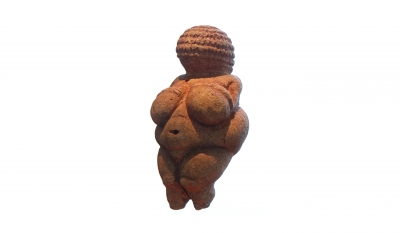
Venus of Willendorf, also called Woman of Willendorf or Nude Woman, Upper Paleolithic female figurine found in 1908 at Willendorf, Austria, that is perhaps the most familiar of some 40 small portable human figures (mostly female) that had been found intact or nearly so by the early 21st century.
Very little is known about the Venus’ origin, method of creation, or cultural significance; however, it is one of numerous “Venus figurines” surviving from Paleolithic Europe. The purpose of the carving is the subject of much speculation. Like other similar sculptures, it probably never had feet, and would not have stood on its own, although it might have been pegged into soft ground. Parts of the body associated with fertility and childbearing have been emphasized, leading some researchers to believe that the Venus of Willendorf and similar figurines may have been used as fertility fetishes. The figure has no visible face, her head being covered with circular horizontal bands of what might be rows of plaited hair, or perhaps a type of headdress.
Catherine McCoid and LeRoy McDermott hypothesize that the figurines may have been created as self-portraits by women. This theory stems from the correlation of the proportions of the statues to how the proportions of women’s bodies would seem if they were looking down at themselves, which would have been the only way to view their bodies during this period. They speculate that the complete lack of facial features could be accounted for by the fact that sculptors did not own mirrors. This reasoning has been criticized by Michael S. Bisson, who notes that water pools and puddles would have been readily available natural mirrors for Paleolithic humans.
Picture Credit : Google

